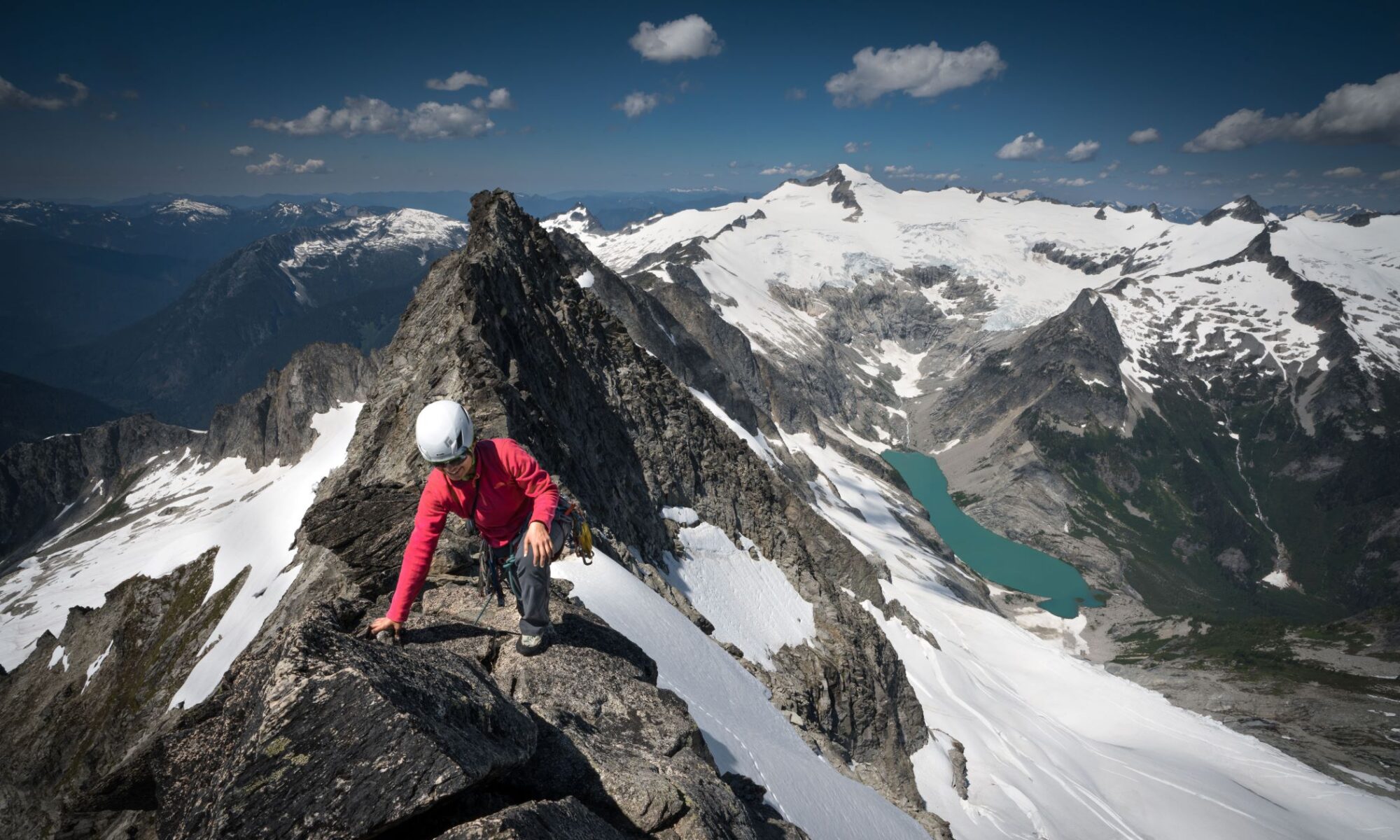Come out and meet Libby Sauter at The Summit, on Nov. 16 at the Melody Center. Get your tickets at portlandalpinefest.org.
It’s sometimes hard to imagine our climbing heroes outside of their vertical worlds. If not spending their time crushing it on a big wall, setting speed records, or putting up first ascents, their lives must purely be spent training for those big projects, right? While for some that may be true, for Libby Sauter, there is much more to her than just a talented athlete. Although she is a highly-accomplished rock climber, Libby has devoted a significant part of her time to her job as a pediatric cardiac ICU nurse. If that isn’t enough, her job has seen her work in places like Libya, Ukraine, and Iraq. So what does it mean to be so motivated on two very different fronts? Let’s find out…
You are best-known in the climbing world for holding a speed record on the Nose of El Capitan. Talk about what holding that record means to you.
The Nose speed record was the ultimate avenue to test my ability to reach for lofty goals. The routes meaning has changed significantly for me over the years from triumph to rather bittersweet in the wake of the accidents that have transpired on El Cap around speed climbing.
Being a world-class rock climber can be all consuming at times and, as we all know, life is about balance. How do you find the balance in your life that allows you to succeed in and outside of rock climbing?
I was lucky enough to not fully become obsessed with rock climbing until after I completed my university degree in nursing. Having a flexible, well-paying career has giving me the ability to bounce between my two greatest passions.
Is there a particular moment amongst your experiences as a traveling nurse that sticks with you more than others?
Pediatric cardiac nursing is a very intense field of health care so there are lots of moments that stand out. One time I watched a little girl’s heart start beating again after we had cracked open her chest in the ICU. Those scenarios don’t often end so happily in the developing world. I was in Benghazi when ISIS was defeated and watching the final moments of that battle from the hospital rooftop will stay with me forever. As well, all the countless tears I shared with my nursing best friend Lisa after particularly tough days are pivotal moments in my life.
Which personal qualities are transferrable between being a successful climber and a successful nurse?
Basically, any trait that involves working harder than you could ever imagine, going past extreme physical and emotional exhaustion. These traits are helpful in both fields.
Perhaps more interestingly, which personal qualities would you rely on during one activity but never call upon during the other?
Nursing and climbing have so much in common to the point that I can’t really think of a trait that is important in one, but not in the other: fear control, check. Responsibility for someone else’s life, check. Calm under pressure, check. Tolerance of other people’s bodily fluids, check.
Do you usually try to combine a climbing trip with a work trip (i.e. go and climb in the country you’re working in once your contract is finished) or is there a bit of a break between the two?
I haven’t been nursing abroad this year but, previously, I would often try and combine trips. Work was already paying for my transcontinental ticket so I could easily just book little flights around Europe or Asia in between. The Middle East airport hub is Istanbul so I’ve spent lots of time in transit there. I made a really rad climber friend there through the couchsurfing.org website so anytime I had a long layover, I had a partner to get out with. He just opened Istanbul’s first full-fledged climbing gym, DuvarX. Check it out if you ever find yourself in that part of the world!
As climbers, we’re often fortunate to be in incredible places that the majority of people will never will be able experience. Do we, as outdoor enthusiasts, have a responsibility to those places that extends beyond “Leave no Trace”?
I think we as humans have a responsibility to take care of the planet on which we live, regardless of whether or not we are climbers. But since we have such an intimate relationship with many remote places we have the ability to be extra conscious about leaving no trace, to addressing our trespasses on tribal land, to dealing with our industry’s hypocrisies regarding green living.
What are your future projects (whether climbing related or not)?
My projects of late have more revolved around mountain running and academics than climbing. Losing a really close friend to climbing just a month after Quinn Brett became paralyzed on the Nose last year has really taken the wind out of my climbing sails. I started a grad school program in Global Health that I am very excited about this fall.
Here is an easy one. What is the one food that you crave the most after a few long days in the mountains?
Salty, crunchy! That usually means cheddar popcorn and chips and salsa/hummus/guac! YUM!









































